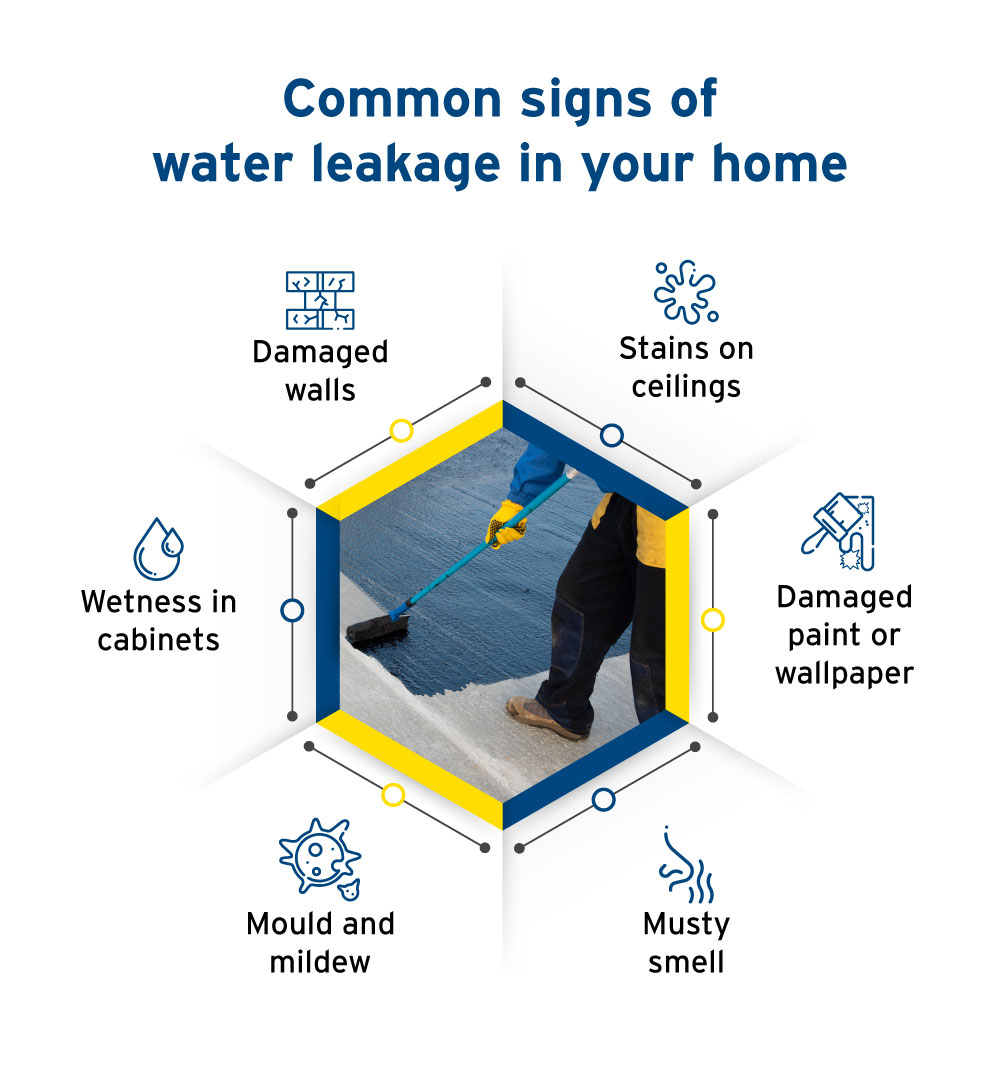
Renovation
Detecting common home water leakage signs and spots (and the solution)
Noticing indications of water leakage but uncertain about the root cause? Discover how to pinpoint the source and explore effective solutions for addressing water leakage.
Water leakage problems are like unwelcome guests - slipping through cracks, seeping from pipes, and causing havoc. If you ignore them, they will paint your walls with trouble—peeling paint, funny smells, mould, health concerns, and more.
These leaks are bad for your house and worse for your wallet. Luckily, this guide is here to help you track them down and kick them out. Get ready to put water leakages in their place!
Common areas to check for water leakage
While leakage can occur in any part of your house, here are some common areas -
1. Interior and exterior walls - Check your walls for discolouration, peeling paint, patches, mould, or the presence of a white, powdery substance (efflorescence). These may signal hidden seepage.
2. Bathrooms - Check for water stains and water pooling near the shower area and sink. Loose or discoloured tiles, corroded pipes, or fittings can all be signs of water leakage, relevant for both individual houses and apartments.
3. Kitchens - Underneath the sinks or behind the washing machine are common areas for water leakage in a kitchen. Some signs you can watch out for are damp cabinets, water stains on the walls near the sink area, and musty smells, which are relevant for both individual houses and apartments.
4. Roof - Check your roof and look for damp patches on the ceiling, damp spots, water pooling, and peeling paint to detect water leakages. Pay attention to any signs of water infiltration on your ceiling.
5. Water tanks - Due to the bulk of water stored in water tanks, they are susceptible to leakage and their adjoining walls are susceptible to dampness and seepage. Look for damp patches, dripping water, stains, and such to catch leaks.
6.Inspect common areas - If you notice any signs of water damage, such as damp areas, fungus growth, or musty smells in common spaces between apartments, report them to your building management. For you never know when they might reach your house.
If these signs are identified early, they can be readily addressed through waterproofing.
How can you solve water leakage issues?
The only solution to water leakage is waterproofing. You must waterproof all the areas that are prone to water leakage - the roof, kitchen, bathroom, internal walls and external walls - to ensure your house or apartment stays free of water damage.
To wrap up
First fixing and then preventing further water leakage issues are important for your home's health. Regular inspections and waterproofing can keep your home safe and save you money.
Don't know whom to call? Reach out to experts at Dr. Fixit who will assess the damage and provide you with the best waterproofing solutions by filling out the query form given below.
Get Professional Waterproofing Solutions Today
Fill The Form below to took free site evaluation by Dr. fixit point safe painting service expert
